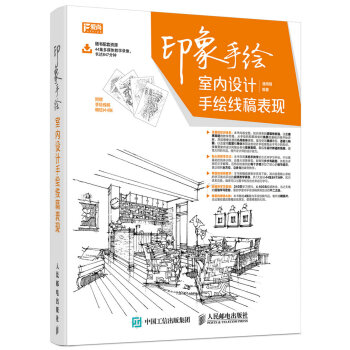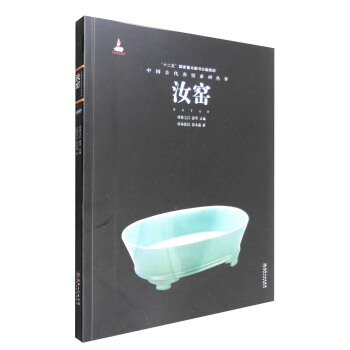

具体描述
产品特色
内容简介
《完全制片手册(第4版)》是一本为学生和电影电视业的专业人士而著的综合指南,涵盖从前期准备到完成拍摄,再到后期制作的方方面面,并介绍了独立电影和低成本电影制作、电视制作、商业片制作、财税刺激政策、特效制作和新媒体等相关内容,另外还推荐了谈判技巧和有价值的业内生存技巧。在《完全制片手册(第4版)》中你将发现影片所需的全部基本制片表格和会计表格,以及前期制作时间表、前期制作和拍摄完成的打包清单、后期制作工作流程表。《完全制片手册(第4版)》是为学生和入行新手,以及执行制片人、制片主任、助理导演、制片协调人和其他制片人员提供的一本宝贵的易于使用的参考书,对完成一部电影所需的步骤和工作方式进行了细致入微的说明。
本次第4版修订的内容包括以下几方面。
有关纪录片、短片和电影节的独立电影和低成本电影制作内容
有关电视制作和新媒体制作的内容
财税政策
关于“环保拍摄”的建议,行业政策及对动物的使用
关于保密协议、日程表、旅行、船运、在国外工作、雇用未成年人、通信及数字前后期制作的新内容
《完全制片手册(第4版)》作者伊芙·汉赛娜(Eve Light Honthaner)在娱乐行业已有多年的任职经历,主要领域是制片管理。她曾担任过不同的职位,从制片助理到执行制片人都有所涉及。她是美国制片人协会的成员,她参与拍摄的影片包括:《泰坦尼克号》(Titanic)、《新婚告急》(Just Married)、《热带惊雷》(Tropic Thunder)等。她还是《好莱坞奋斗:娱乐行业的生存法则》(Hollywood Drive: What It Takes to Break In, Hang In & Make It in the Entertainment Industry)一书的作者,她每年夏天在南加州大学电影艺术学院授课,并在全美各地区开办讲座。
作者简介
伊芙?汉赛娜(Eve Light Honthaner)在娱乐行业已有多年的任职经历,主要领域是制片管理。她曾担任过不同的职位,从制片助理到执行制片人都有所涉及。她是美国制片人协会的成员,她参与拍摄的影片包括:《泰坦尼克号》(Titanic)、《新婚告急》(Just Married)、《热带惊雷》(Tropic Thunder)等。她还是《好莱坞奋斗:娱乐行业的生存法则》(Hollywood Drive:What It Takes to Break In, Hang In Make It in the Entertainment Industry)一书的作者,她每年夏天在南加州大学电影艺术学院授课,并在全美各地区开办讲座。精彩书评
本书是为学生和入行新手,以及执行制片人、制片主任、助理导演、制片协调人和其他制片人员提供的一本宝贵的易于使用的参考书,该指南对于完成一部电影所需的步骤和工作方式提供了细致入微的说明。目录
目 录第1章 制片团队及其分工 1
1.1 引言(Introduction) 1
1.2 制片人员(Producers) 1
1.2.1 监制(Executive Producer) 2
1.2.2 制片人(Producer) 2
1.2.3 联合制片人(Co-Producer) 2
1.2.4 执行制片人(Line Producer) 2
1.2.5 后期制片人(Post Production Producer) 3
1.2.6 助理制片人(Associate Producer) 3
1.3 制片管理(Production Management) 3
1.3.1 制片主任(Unit Production Manager) 3
1.3.2 第一助理导演(First Assistant Director) 4
1.3.3 第二助理导演(Second Assistant Director) 4
1.3.4 制作总监(Production Supervisor) 4
1.3.5 制作协调人(Production Coordinator) 4
1.4 本章表格(Forms in This Chapter) 4
第2章 制片办公室 13
2.1 引言(Introduction) 13
2.2 办公空间(Office Space) 13
2.3 办公室的建立(Setting Up) 15
电话系统(Phone Systems) 17
2.4 制片“百宝箱”(The Traveling Production Kit) 18
2.5 电话接待(Answering the Phone) 20
2.6 保密工作(Confidentiality) 20
2.6.1 碎纸处理(Shredding) 20
2.6.2 水印(Watermarking) 21
2.7 制片助理(Production Assistants) 21
2.8 实习生(Interns) 22
2.9 技术为王(Ain’t Technology Great?) 23
招聘技术员(Techie Wanted) 23
2.10 摄制组成员因公务驾驶私家车(Employees Driving Their Own Vehicles for Business Purposes) 23
2.11 人员安排和工作分配(Staff Scheduling and Assignment of Duties) 23
2.12 工作人员会议(Staff Meetings) 24
2.13 工作午餐(Office Lunches) 24
2.14 时间管理(Time Management) 25
2.15 库存单、使用记录单和领取单(Office Inventories, Logs, and Sign-Out Sheets) 25
2.16 文件(The Files) 26
2.16.1 空白表格文件(Files of Blank Forms) 26
2.16.2 电影、电视电影、有线电视及网络文件(Files for Features, Movies for Television, Cable or Internet) 27
2.16.3 电视连续剧文件(Series Files) 29
2.16.4 每日文件(Day Files) 29
2.17 本章表格(Forms in This Chapter) 29
第3章 基础会计知识 35
3.1 引言(Introduction) 35
3.2 制片会计(The Production Accountant) 35
3.3 会计部门(The Accounting Department) 36
3.4 薪资发放(Handling Payroll) 36
3.5 薪资公司(Payroll Companies) 37
3.6 会计指导原则(Accounting Guidelines) 37
3.6.1 材料准备(Start Paperwork Packets) 37
3.6.2 薪资(Payroll) 38
3.6.3 百宝箱租用(Box Rentals) 40
3.6.4 供应商账户(Vendor Accounts) 40
3.6.5 竞标书(Competitive Bids) 40
3.6.6 订购单(Purchase Orders) 40
3.6.7 支票请款单(Check Requests) 41
3.6.8 小额现金(Petty Cash) 41
3.6.9 网上采购(Online Purchases) 42
3.6.10 话费补贴(Cell Phone Reimbursement) 42
3.6.11 汽车补贴(Auto Allowances) 43
3.6.12 里程补贴(Mileage Reimbursement) 43
3.6.13 往返补贴(Drive-To) 43
3.6.14 生活津贴(Per Diem and Living Allowance) 43
3.6.15 发票(Invoicing) 43
3.6.16 其他可课税收入(Additional Taxable Income) 44
3.7 预算(The Budget) 44
3.8 支出跟踪(Tracking Costs) 47
3.9 审计(The Audit) 47
3.10 本章表格(Forms in This Chapter) 48
第4章 从剧本到拍摄 77
4.1 引言(Introduction) 77
4.2 一切从剧本开始(It All Starts With a Script) 77
剧本修订(Script Revisions) 77
4.3 分场景清单(The Breakdown) 79
4.4 分场景清单卡(The Board) 82
4.5 拍摄进度表(The Schedule) 83
4.5.1 考勤表(Day-Out-of-Days) 84
4.5.2 分场景清单(Breakdowns) 85
第5章 财税刺激政策 87
5.1 引言(Introduction) 87
5.2 财税刺激政策的发展(The Evolution of Incentive Programs) 87
5.3 不稳定性(In Flux) 88
5.4 考虑因素(What to Consider) 88
5.5 基础设施(Infrastructure) 89
5.6 财税刺激政策的种类(Types of Incentives) 90
5.6.1 折扣(Rebate) 90
5.6.2 课税减免(Tax Credits) 90
5.6.3 可退还的课税减免(Refundable Tax Credits) 90
5.6.4 可转让的课税减免(Transferable Tax Credits) 90
5.6.5 不可退还、不可转让的课税减免(Nonre-fundable, Nontransferable Tax Credits) 90
5.6.6 预付/延期款项(Up-Front or Back-End Funding) 90
5.7 总结(Conclusion) 90
第6章 前期制作 91
6.1 什么是前期制作(What is Pre-Production?) 91
6.2 制定公司政策(Establishing Company Policies) 91
6.3 摄影棚(Stages) 92
6.4 无休止的会议(Meetings, Meetings, and More Meetings) 93
6.5 通信(Communications) 95
6.5.1 移动电话、黑莓、无线网络及其他(Cellular Phones, BlackBerrys, Wireless Internet and More) 95
6.5.2 对讲机(Walkie-Talkies) 96
6.6 视觉效果预览(Previsualization) 97
6.7 提前计划(Plan Ahead) 97
6.8 前期制作计划样表(Sample Pre-Production Schedule) 98
6.9 每日的预备计划(Daily Prep Schedules) 100
6.10 记录单和领用单(More on Logs and Sign-Out Sheets) 100
6.11 分发(Distribution) 101
6.12 收集信息和制作列表(Collecting Information and Making Lists) 101
6.12.1 剧组成员信息表(Crew Information Sheet) 101
6.12.2 剧组成员列表(The Crew List) 101
6.12.3 行政人员列表(The Executive Staff List) 105
6.12.4 演员列表(The Cast List) 105
6.12.5 联络表(The Contact List) 106
6.13 防患于未然(Better Safe than Sorry) 106
6.14 前期制作清单(Pre-Production Checklist) 107
从头开始(Starting from Scratch) 107
6.15 创建你自己的制片手册(Creating Your Own Production Manual) 113
6.16 善待自己(For Your Own Good) 114
6.17 本章表格(Forms in This Chapter) 114
第7章 保险要求 121
7.1 引言(Introduction) 121
7.2 投保指导原则(General Insurance Guidelines) 121
7.3 错误和过失险(Errors and Omissions)(E&O;) 122
7.4 综合责任险(Comprehensive General Liability) 123
7.5 保险单(Certificates of Insurance) 123
7.6 租用、借用、受赠或非自有汽车责任险(Hired, Loaned, Donated or Nonowned Auto Liability) 123
7.7 租用、借用、受赠汽车损失险(Hired, Loaned or Donated Auto Physical Damage) 124
7.8 员工赔偿和雇主责任险(Workers’ Compensation and Employer’s Liability) 124
7.9 协会/工会事故保障(Guild/Union Accident Coverage) 125
7.10 制片打包保险(组合保险)(Production Package-Portfolio Policy) 125
7.10.1 演职人员保险(Cast Insurance) 125
7.10.2 关键人员保险(Essential Elements) 126
7.10.3 亲人亡故险(Bereavement Coverage) 126
7.10.4 记录载体(胶片、数字载体或其他介质)/直接物理损失险(Production Media (Film, Digital Elements or Other Medium)/Direct Physical Loss) 126
7.10.5 瑕疵材料、摄影及冲印(Faulty Stock, Camera and Processing) 126
7.10.6 道具、场地和场景;服装和服饰;各种租用设备;办公用品(Props, Sets and Scenery; Costumes and Wardrobe; Miscellaneous Rented Equipment; Office Contents) 126
7.10.7 额外开销(Extra Expense) 127
7.10.8 第三方财物损坏(Third-Party Property Damage) 127
7.11 补充(或可选择)保险(Supplemental (or Optional) Coverages) 127
7.11.1 保护责任(额外责任)(Umbrella (Excess Liability)) 127
7.11.2 飞行器的使用(Use of Aircraft) 127
7.11.3 船只的使用(Use of Watercraft) 127
7.11.4 铁路或铁路设施的使用(Use of Railroads or Railroad Facilities) 128
7.11.5 贵重物品的使用(Use of Valuables) 128
7.11.6 家畜或动物的使用(Use of Livestock or Animals) 128
7.11.7 信号中断险(Signal Interruption Insurance) 128
7.11.8 海外制片打包险(Foreign Package Policy) 128
7.11.9 政治危机险(Political Risk Insurance) 128
7.11.10 气候险(Weather Insurance) 128
7.12 完片保障(Completion Bonds) 128
7.13 索赔报告流程(Claims Reporting Procedures) 129
提交索赔(Submitting Claims) 129
7.14 本章表格(Forms in This Chapter) 130
第8章 中期拍摄 151
8.1 准备工作继续(The Prep Continues) 151
8.2 片场(The Set) 151
8.3 沟通(Communications) 152
8.4 每日例行事务(The Daily Routine) 152
8.5 通告单和制片报告(Call Sheets and Production Reports) 154
8.6 片场文书工作(Paperwork from the Set) 155
8.7 场记工作(The Script Supervisor’s Role) 155
8.8 前一天的准备(The Day Before) 157
8.9 补拍(Reshoots) 157
8.10 每日结束工作(Daily Wrap) 158
8.11 轻松时刻(On the Lighter Side) 158
8.12 本章表格(Forms in This Chapter) 160
第9章 建立坚实的行业关系:良好的交易和正确的决策 177
9.1 引言(Introduction) 177
9.2 供应商(Vendors) 177
与供应商谈判(Negotiating with Vendors) 178
9.3 制片厂和电视网的监制(Studio and Network Executives) 178
9.4 经纪人(Agents) 179
9.5 你的团队(Your Crew) 180
雇用工作人员的谈判技巧(Negotiating Tips for Hiring Crew) 181
9.6 避免因小失大(Avoid Cutting Off Your Nose to Spite Your Face) 181
9.7 商业行为指导准则(Standards of Business Conduct ) 182
9.8 策略和原则(Politics and Principles) 182
9.9 制片人的职责(A Producer’s Mission) 183
第10章 协议备忘录 185
10.1 引言(Introduction) 185
10.2 演员协议备忘录(The Cast Deal Memo) 185
10.3 剧组人员协议备忘录(Crew Deal Memos) 185
10.4 编剧协议备忘录(Writers’ Deal Memos) 185
10.5 美国导演协会协议备忘录(DGA Deal Memos) 185
10.6 本章表格(Forms in This Chapter) 186
第11章 工会与协会 195
11.1 引言(Introduction) 195
11.2 行业工会和协会概述(An Overview of Industry Unions and Guilds) 195
11.3 工会影片与非工会影片(Union Versus Nonunion Shows) 195
11.4 成为工会成员(Becoming a Union Member) 196
11.5 与工会签约(Becoming a Union Signatory) 196
11.6 更多细节(More Specifically) 197
11.6.1 银幕演员工会(SAG) 197
11.6.2 美国电视和广播艺员联盟(AFTRA) 198
11.6.3 美国导演协会(DGA) 198
11.6.4 美国编剧协会(WGA) 200
11.6.5 美国制片工作者协会(PGA) 201
11.7 电影电视制片工作者联盟(The Alliance of Motion Picture and Television Producers,AMPTP) 201
11.8 合约服务托管中心(Contract Services Administration Trust Fund) 201
11.9 演员工会、导演协会、编剧协会:表格和报告(SAG,DGA and WGA: Forms and Reports) 201
11.10 工会和联盟联系信息(Union and Guild Contact Information) 202
第12章 主要演员 205
12.1 引言(Introduction) 205
12.2 借助技术的帮助(With a Little Help from Technology) 205
12.3 确定演员之后的后续事宜(Follow-Through After an Actor’s Been Cast) 205
12.4 工作通告(Work Calls) 207
12.5 演员分类(Performer Categories) 207
12.6 特技演员的种类(Stunt Performer Categories) 207
12.7 面试(Interviews) 208
12.8 工作周(Workweek) 208
12.9 休息时间(Rest Periods) 208
12.10 连续聘用(Consecutive Employment) 208
12.11 交通和外景地开销(Transportation and Location Expenses) 209
12.12 配音(Looping) 209
12.13 只针对电影的配音(Dubbing (Theatrical Motion Pictures Only)) 209
12.14 雇用未成年演员(The Employment of Minors) 209
12.14.1 工作许可证(Work Permits) 210
12.14.2 库根法案(Coogan’s Law) 210
12.14.3 父母、监护人、老师和学习(Parents, Guardians, Teachers and Schooling) 210
12.14.4 工作时间(Working Hours) 211
12.14.5 未成年人其他事项指导原则(Miscellaneous Guidelines Pertaining to Minors) 211
12.14.6 加州特别规定(Specific California Guidelines) 211
12.15 塔夫特/哈特利法案(TAFT/HARTLEY) 212
12.16 裸露镜头(Nudity) 213
12.17 在烟雾中工作(Work in Smoke) 213
12.18 工会背景演员(SAG Background Actors) 213
12.19 补充说明(Additionally) 213
12.20 本章表格(Forms in This Chapter) 213
12.21 演员工会办公室(Screen Actors Guild Offices) 214
第13章 临时演员 255
13.1 临时演员经纪人(Background Casting Agencies) 255
发现特殊类型的临时演员(Finding Specific Types) 255
13.2 工作流程(The Process) 255
组织大量演员以及在露天大型运动场拍摄(Gathering Large Crowds and Filling Stadiums) 257
13.3 临时演员在外景地拍摄(Background Casting on Location) 257
13.4 演员工会所属的特殊类型临时演员(Specifically SAG) 258
从非工会演员到工会演员(Moving from Nonunion to Union Status) 259
13.5 临时演员注意事项(With the Extra in Mind) 259
临时演员行为准则(Reminder of Professional Conduct for Background Actors) 260
13.6 本章表格(Forms in This Chapter) 260
第14章 与动物拍戏 263
14.1 引言(Introduction) 263
14.2 操作过程(The Process) 263
14.2.1 动物运输(Shipping Animals) 263
14.2.2 动物训练师(Animal Trainers) 264
14.3 一些专业建议(Some Expert Advice) 264
14.4 美国人道主义协会(The American Humane Association) 264
第15章 许可证和让渡协议 267
15.1 引言(Introduction) 267
15.2 需要办理许可证的事项(What Needs to Be Cleared) 268
15.2.1 肖像(Likeness) 268
15.2.2 群众演员公告(Crowd Notice) 268
15.2.3 场地(Locations) 268
15.2.4 姓名(Name) 268
15.2.5 企业或机构名称(Names of Actual Business or Organizations) 268
15.2.6 电话号码(Telephone Numbers) 268
15.2.7 车辆牌照(License Plates) 268
15.2.8 政府当局形象(Depiction of Public Authorities) 268
15.2.9 街道地址(Street Addresses) 268
15.2.10 商品形象(Depiction of Actual Products) 268
15.2.11 海报和画作(Posters and Paintings) 269
15.2.12 出版物(Publications) 269
15.2.13 货币(Currency) 269
15.2.14 网址(Web Addresses) 269
15.2.15 音乐(Music) 269
15.3 产品植入(Product Placement) 269
15.4 电影片断、剧照和新闻资料片在多媒体节目中的使用指南(Guidelines for the Use of Clips, Stills and News Footage in Multimedia Programs) 270
15.4.1 文学作品(Literary Works) 270
15.4.2 新闻资料片(News and/or Stock Footage) 270
15.4.3 电影片断(Film Clips) 270
15.4.4 电视片段(Television Clips) 271
15.4.5 剧照(Still Photos) 271
15.4.6 公共领域的影片和剧照(Public Domain Films and Stills) 271
15.4.7 预告片(Trailers) 271
15.4.8 演员许可(Talent Clearance) 272
15.4.9 导演和编剧酬劳(Directors and Writers Payments) 274
15.5 分发许可表格(Distribution of Release Forms) 274
15.6 本章表格(Forms in This Chapter) 274
第16章 音乐授权指南 295
16.1 什么是音乐授权?(What is Music Clearance?) 295
16.2 为什么出品方必须获得“音乐版权”使用许可?(Why Does a Producer Have to Secure Licenses for “Music Rights”?) 295
16.3 关于音乐授权的错误和遗漏保险(How Does Your Errors and Omission Insurance Policy Relate to Music Clearance?) 295
确定音乐作品和唱片的拥有者(Who Are the Owners of Musical Compositions and Recordings?) 296
16.4 美国最高法院关于《后窗》的决议及其对音乐授权的影响(What Was the U.S. Supreme Court’s Rear Window Decision and How Does It Affect Music Licensing?) 296
16.5 确认作品中使用的音乐材料合理授权的必要权利(What Rights Are Needed in Order to Make Sure that the Musical Material Used in a Production Is Properly Cleared?) 296
16.5.1 公开表演权(Public Performing Rights) 296
16.5.2 复制权(Reproduction Rights) 296
16.5.3 改编权(Adaptation Rights) 297
16.6 向谁获取音乐权?(From Whom Are These Music Rights Obtained?) 297
16.6.1 音乐作品(Musical Compositions) 297
16.6.2 唱片(Recordings) 297
16.7 音乐提示单及其重要性(What Is a Music Cue Sheet and Why Is It So Important?) 297
16.8 音乐提示单的递交机构(To Where Should Music Cue Sheets Be Sent?) 298
16.9 版权所有者能否阻止音乐被使用?(Can a Copyright Owner Prevent Music from Being Used?) 298
16.10 如果未经授权就使用歌曲将会怎样?(What Happens If a Song Is Used Without Clearance?) 298
16.11 老歌是否属于公共领域,可以不受限制地免费使用?(What About Old Songs? Aren’t These Songs in the Public Domain, and Free to Be Used Without Restrictions?) 298
16.12 音乐可以受到多长时间的版权保护?(How Long Can Music Be Protected by Copyright?) 299
16.13 能否在8个酒吧使用同一首歌而不支付版税?(May I Use Eight Bars of a Song Without Paying for It?) 299
16.14 什么叫“合理使用”?(What Is “Fair Use”?) 299
16.15 歌名可否用作节目名称?(May the Title of a Song Be Used as the Title of a Program?) 299
16.16 歌词以对话形式出现是否需要授权?(Must a License Be Secured if Song Lyrics Are Spoken in Dialogue?) 299
16.17 是否可以未经许可改编既有歌曲的歌词?(May Lyrics to an Existing Song Be Changed Without Permission?) 299
16.18 如果一部电视剧只获得了某首歌曲在其中一集的使用权,是否可以不经许可把该歌曲用于该剧的其他集?(If a Song Is Cleared for One Episode of a Television Series, May It Be Used in Other Episodes Without Additional Permission?) 299
16.19 商业广告中的音乐是否需要授权?(Is It Necessary to Clear Music That’s to Be Used in Commercials?) 300
16.20 唱片或CD能否用于电视节目?(May Records or Compact Discs Be Used on a Television Show?) 300
16.21 如果拥有电视节目或电影片断的使用许可,是否包括使用片断中所含音乐的权利?(If a License Is Obtained to Use a Film Clip from a Television Program or Feature Film, Will that License Include the Right to Use the Music Contained on the Clip?) 300
16.22 如果唱片公司发放了某个音乐视频片断的使用许可,还需要进一步的授权吗?(If a Record Company Issues a License to Use a Music Video Clip, Will Further Clearances Be Required?) 300
16.23 现场直播或录播电视节目第一次在美国电视网播映是否需要同步授权?(Is a Synchronization License Required for the First U.S. Network Broadcast of an Original Live or Taped Television Program?) 300
16.24 家庭录像市场的节目发行需要获得哪些授权?(What Rights Are Required to Release a Program for Sale in the Home Video/DVD Marketplace?) 301
16.25 音乐版权所有者可以就家庭录像权收取哪些费用?(What Do Music Copyright Owners Charge for Home Video/DVD Rights?) 301
16.26 电影如何获得音乐授权?(How Are Feature Films Licensed?) 301
16.27 宗教节目如何获得音乐授权?(How Is Music Licensed in Religious Programs?) 301
16.28 在电视或电影中使用歌曲需要多少授权费用?(How Much Will It Cost to Clear a Song for Use in My Television or Film Project?) 302
16.29 什么是采编乐曲?(What Is a Needle Drop?) 302
16.30 许可到期会怎样?(What Happens When Licenses Expire?) 302
第17章 安全 303
17.1 安全计划(Safety Programs) 303
17.2 安全会议(Safety Meetings) 303
17.3 安全培训(Safety Training) 304
17.4 责任的指定范围(Designated Areas of Responsibility) 304
17.5 安全公告(Safety Bulletins) 304
制片安全操作行为(General Code of Safe Practices for Production) 304
17.6 电影制作的一般安全准则(General Safety Guidelines for Production) 305
17.6.1 一般准则(General Rules) 305
17.6.2 搬运和移动(Lifting and Moving) 306
17.6.3 常见的跌跤风险(天桥、跑道、地板孔、护栏、脚手架和楼梯井)(Common Fall Risks(Catwalks, Runways, Floor Openings, Guard Rails, Scaffolds and Stairwells)) 306
17.6.4 危险物品(Hazardous Materials) 306
17.6.5 工具和相关设备(Hand Tools and Related Equipment) 306
17.6.6 拍摄装置(话筒杆、摄影机和摄影车、升降车、移动车等)(Filming Equipment(Booms, Camera and Insert Cars, Cranes, Dollies, etc.)) 306
17.6.7 拍摄用交通工具(飞机、直升机、汽车、火车等)(Filming Vehicles(Aircraft, Helicopters, Cars, Trains, etc.)) 306
17.6.8 电器安全(Electrical Safety) 306
17.6.9 水的危害(Water Hazards) 306
17.6.10 特技和特效(Stunts and Special Effects) 307
17.6.11 烟(Smoke) 307
17.6.12 武器(Firearms) 307
17.6.13 动物(Animals) 307
17.6.14 环境问题(Environmental Concerns) 307
17.6.15 警惕紧急情况的发生(Preparing for an Emergency) 307
17.7 演员工会——安全准则(Screen Actors Guild——Safety Regulations) 307
17.8 在危险环境下工作(Working Under Hazardous Conditions) 308
17.9 来自专家的建议(Advice from an Expert) 308
17.10 性骚扰(Sexual Harassment) 308
17.11 外景个人安全注意事项和建议(“On Location”-Personal Safety Considerations and Suggestions) 309
17.11.1 在拍摄前一天查看拍摄场地(Visit Locations Prior to First Day of Shooting) 309
17.11.2 帮派地盘(Gang-Occupied Locations) 309
17.11.3 附加安全建议(Additional Suggestions) 309
17.11.4 采取行动(Taking Action) 309
17.11.5 冲突解决方案(Conflict Resolution) 310
17.11.6 自卫行为(Self-Defense) 310
17.12 本章表格(Forms in This Chapter) 310
第18章 采景 317
18.1 引言(Introduction) 317
18.2 外景制片(The Location Manager) 317
18.3 电影从业人员行为准则(Filmmaker’s Code of Conduct) 321
电影从业人员行为准则(Filmmaker’s Code of Conduct) 321
18.4 告示书范例(Sample Notification Letter) 322
18.5 本章表格(Forms in This Chapter) 323
第19章 外景地拍摄 331
19.1 引言(Introduction) 331
19.2 外景地的外景制片(Location Managers on Distant Location) 331
19.3 制片办公室(The Production Office) 331
移动制片办公室(The Traveling Production Office) 332
19.4 外景地工作清单(Distant Location Checklist) 332
19.5 欢迎来到外景地(Welcome to Location) 334
19.6 与当地社团打交道(Interacting with Local Communities) 335
19.7 电影委员会(Film Commissions) 335
19.8 银幕演员工会分支办公室(SAG Branch Offices) 336
19.9 本章表格(Form in This Chapter) 336
第20章 国外拍摄 339
20.1 引言(Introduction) 339
20.2 在国外拍摄美国电影(U.S. Companies Shooting in Foreign Countries) 339
20.2.1 离境之前的准备(Before You Make Your Plane Reservations) 339
20.2.2 为摄制组成员提供信息(Supplying Information to Cast and Crew) 341
20.2.3 出入境须知(Instructions for Crossing into a Foreign Country) 342
20.2.4 美国反境外腐败条例(The U.S. Foreign Corrupt Practices Act(FCPA)) 342
20.3 在美国拍摄外国电影(The United States as a Foreign Location) 343
20.3.1 O型签证(O Visas) 343
20.3.2 P型签证(P Visas) 344
20.3.3 H-2B签证(H-2B Visas) 344
第21章 旅行和住宿 347
21.1 引言(Introduction) 347
21.2 旅行注意事项(Travel Considerations) 347
21.2.1 一般旅行信息(General Travel Information) 348
21.2.2 转场清单和个人转场行程单(Movement Lists and Individual Travel Itineraries) 349
21.3 住宿(Housing) 349
21.3.1 让人头疼的人(There’s Always Someone) 350
21.3.2 备选方案(Alternative Housing) 351
21.4 本章表格(Forms in This Chapter) 351
第22章 运输 359
22.1 引言(Introduction) 359
22.2 货运公司(Shipping Companies) 359
22.3 运输协调人(Shipping Coordination) 359
22.4 运输基本规则(General Shipping Guidelines) 360
22.4.1 危险品运输(Dangerous Goods) 361
22.4.2 运输方式(Modes of Transportation) 361
22.5 国内运输(Domestic Shipping) 362
22.5.1 载货单(Manifests) 362
22.5.2 包装和贴标(Packing and Labeling) 363
22.5.3 样片运输(Shipping Dailies) 363
22.5.4 武器、军火和爆炸物(Weapons, Ammunition, and Explosives) 364
22.5.5 运输动物(Shipping Animals) 364
22.5.6 运回(Returns) 364
22.6 国际运输(International Shipping) 366
22.6.1 报关和运输总则(General Customs and Shipping Guidelines) 366
22.6.2 临时性出口与永久性出口(Temporary versus Definite) 367
22.6.3 经纪人和货运代理人(Brokers and Freight Forwarders) 367
22.6.4 临时出口货物的方法(Methods of Importing Goods on a Temporary Basis) 368
22.6.5 过境运输(Transporting Goods Across the Border) 370
22.6.6 费用(Fees) 370
22.6.7 国际货运包装和贴标(Packing and Labeling International Shipments) 370
22.6.8 向供应商提供信息(Providing Information to Vendors) 371
22.6.9 货物运回(Returns) 371
22.6.10 在国外拍摄的生胶片和样片(Film and Dailies on a Foreign Location) 371
22.6.11 美国的销售税免除(U.S. Sales Tax Exemptions) 371
22.6.12 最后的建议(Final Notes) 372
22.7 本章表格(Forms in This Chapter) 372
第23章 特效 381
23.1 引言(Introduction) 381
23.2 视觉特效(Visual Effects) 381
23.3 物理特效(Physical Effects) 384
23.4 机械特效(Mechanical Effects) 384
第24章 电视制作 387
24.1 引言(Introduction) 387
24.2 剧集监制(Showrunners) 387
24.3 电视导演(TV Directors) 387
24.4 有线网电影(Cable Movies) 388
24.5 一小时情节剧(The One-Hour Drama) 388
24.5.1 概述(Overview) 388
24.5.2 播映时间(Airdates) 389
24.5.3 字幕(Titles) 389
24.5.4 准备期进度表(A Prep Schedule) 390
24.5.5 预算(Budgets) 390
24.5.6 演员(The Cast) 390
24.5.7 高清因素(The HD Factor) 391
24.5.8 广播电视网和有线电视网的区别(Some Differences Between Broadcast Network and Cable Shows) 391
24.6 真人秀节目(Reality TV) 391
24.6.1 真人秀作为一种类型(Reality as a Genre) 391
24.6.2 选角(Casting) 392
24.6.3 保险注意事项(Insurance Considerations) 392
24.6.4 产品植入(Product Placement) 392
24.6.5 工作人员(Staff and Crew) 392
24.6.6 后期制作(Post Production) 393
24.6.7 总结(Summing It Up) 393
24.7 半小时情景喜剧(Half-Hour Sitcoms) 393
第25章 独立电影制作 395
25.1 引言(Introduction) 395
25.2 独立部门(Specialty Divisions) 395
25.3 开始制作影片(So You’re Going to Make a Film) 396
25.3.1 初来者(For Starters) 396
25.3.2 权利(Rights) 397
25.3.3 完片保证(Completion Bonds) 398
25.4 从融资到发行(From Financing to Distribution) 398
25.4.1 商业计划(A Business Plan) 398
25.4.2 融资模式(Financing Models) 399
25.4.3 银行贷款(Bank Loan) 399
25.4.4 销售代理(About Sales Agents) 400
25.4.5 制片代表(Producer’s Reps) 400
25.4.6 发行(Distribution) 400
25.4.7 选片人(Acquisition Executives) 401
25.5 其他参考信息(Some Additional Resources) 401
第26章 低成本电影制作 403
26.1 引言(Introduction) 403
26.2 关于低成本和超低成本影片制作的一般建议(General Suggestions for Low-and-Ultra-Low-Budget Films) 403
26.3 预算紧张的拍摄工作(Filming on a Shoestring) 405
26.4 短片(Short Films) 407
26.5 商业和创意的结合(Marrying Creativity with Business) 408
26.6 电影节(Film Festivals) 409
26.7 DVD直接转录(Direct-to-DVD) 410
26.8 纪录片(Documentaries) 411
26.9 关于营销(More on Marketing) 413
26.10 影片音乐(Music for Your Film) 414
26.11 其他资源(Additional Resources) 414
26.12 本章表格(Forms in This Chapter) 415
第27章 新媒体 421
27.1 引言(Introduction) 421
27.2 什么是新媒体?(What is New Media) 421
27.3 跨媒体平台(Cross-Platforms) 422
27.4 制片厂和电视网(Studios and Networks) 422
27.5 新媒体制作机构(New Media Producers, Studios and Production Companies) 423
27.6 游戏(Games) 424
27.7 特殊场地(Special Venues) 424
27.8 交互式电视(Interactive TV) 424
27.9 数字时代的营销(Marketing in the Digital Age) 425
27.10 了解更多(Where to Go for More) 425
27.11 一些术语(A Little Terminology) 425
27.12 网络资源(Website Resources) 426
27.13 研讨会(Conferences) 427
27.14 最后的思考(Final Thoughts) 427
第28章 广告制作 429
28.1 引言(Introduction) 429
28.2 开发、竞标和授权(Developing, Bidding and Awarding) 429
28.3 前期准备工作簿(The Pre-Production Book) 431
28.4 客户、广告公司、制作公司之间的关系(The Relationship Between The Client, The Agency and The Production Company) 431
28.5 区别(Differences) 431
28.6 总结工作簿(The Wrap Book) 432
28.7 本章表格(Forms in This Chapter) 432
第29章 拍摄结束的整理工作 435
29.1 引言(Introduction) 435
29.2 可回收物品(Recoverable Assets) 435
29.3 准备工作(Getting Started) 436
29.4 试行字幕(Tentative Screen Credits) 437
29.5 拍摄阶段结束后(At the Completion of Principal Photography) 437
29.6 剩余胶片(Short Ends) 438
29.7 各部门整理工作(Wrapping by Department) 438
29.7.1 服装(Wardrobe) 438
29.7.2 道具(Props) 439
29.7.3 置景(Set Dressing) 439
29.7.4 置景/工程(Set Dressing/Construction) 439
29.7.5 美术部门/工程(Art Department/Construction) 439
29.7.6 工程部门(Construction) 439
29.8 包装(Packing) 439
29.9 提交给制作公司的文件(To Submit to Your Production Exec or Parent Company) 440
29.10 基本的整理工作簿(Your Basic Wrap Book) 440
29.11 整理工作清单(Wrap Checklist) 440
29.11.1 法律文件(Legal) 440
29.11.2 外景地文件(Locations) 440
29.11.3 物品归还(Returns) 440
29.11.4 文书工作(Paperwork) 441
29.11.5 财物(Assets) 441
29.11.6 出售、储存、捐赠、委托或安排回收的物品(Sell, Store, Donate, Place on Consignment, Trade for Rental Credit) 441
29.11.7 出售的物品(Items You’re Selling) 441
29.11.8 保险(Insurance) 441
29.11.9 与工会有关的事项(Guild-Related) 441
29.11.10 环境问题(Environmental Concerns) 441
29.11.11 转交给后期制作部门的东西(Turn Over to Post Production) 441
29.11.12 与会计相关的事务(Accounting-Related) 442
29.11.13 关闭制片办公室(Closing the Production Office) 442
29.11.14 最后事项(Before You Walk Out the Door) 442
29.12 最终工作簿(The Final Production Book) 442
29.13 本章表格(Forms in This Chapter) 442
第30章 后期制作 449
30.1 引言(Introduction) 449
30.2 胶片拍摄(Shooting on Film) 450
制作过程(The Process) 450
30.3 数字拍摄(Shooting Digitally) 451
30.4 剪辑(Editing) 452
30.5 导演剪辑版(The Director’s Cut) 452
30.5.1 导演工会基本合同规定(Under the DGA Basic Agreement) 452
30.5.2 导演工会低成本合同规定(Under the DGA Low-Budget Agreement) 452
30.6 样片(Dailies) 452
30.7 后期声音制作(Post Production Sound) 453
30.8 日程安排和工作流程(Schedules and Workflow) 453
30.9 影片字幕(Screen Credits) 454
30.9.1 美国导演工会(DGA) 455
30.9.2 银幕演员工会(SAG) 455
30.9.3 美国编剧工会(WGA) 456
30.9.4 其他重要字幕(Other Significant Screen Credits) 456
30.9.5 选用字幕(Alternative Titles) 456
30.9.6 字幕范例(Sample Screen Credits) 456
30.10 标准交付要求(Standard Delivery Requirements) 460
30.11 后期制作术语(Post Production Terminology) 462
胶片术语和数字术语(Film Terms Translated to Their Digital Equivalent) 466
第31章 绿色拍摄 469
31.1 引言(Introduction) 469
31.2 基本原则(General Guidelines) 470
31.2.1 回收利用(Recycle!) 470
31.2.2 节约能源(Conserve Energy!) 470
31.2.3 树立环保意识(Be Environmentally Responsible!) 470
31.2.4 正确处理危险物品(Properly Dispose of Hazardous Waste!) 471
31.3 部门指南(Departmental Guidelines) 471
31.3.1 制片办公室(The Production Office) 471
31.3.2 工程部(Construction) 471
31.3.3 交通(Transportation) 472
31.3.4 片场(On-Set) 472
31.3.5 后勤(Craft Service/Catering) 472
31.3.6 照明和电力(Crip and Electric) 472
31.3.7 特效(Special Effects) 472
31.3.8 服装(Wardrobe) 473
31.3.9 梳化(Make-Up and Hair) 473
31.3.10 摄影(Camera) 473
31.4 可以回收的物品(What Can Be Recycled) 473
31.4.1 纸张(Paper) 473
31.4.2 金属(Metals) 473
31.4.3 玻璃(Glass) 473
31.4.4 塑料(Plastics) 473
31.4.5 不能回收的物品(Do Not Recycle These Items) 473
31.5 环保指南(Green Guidelines) 474
31.6 绿色链接(Green Links) 474
第32章 行业生存法则 481
32.1 引言(Introduction) 481
32.2 成功的要素(Key Ingredients to a Successful Career) 481
32.2.1 饱满的热情(Passion! Passion! And More Passion!) 481
32.2.2 做好准备(Being Prepared) 481
32.2.3 认识别人也让别人认识你(It’s Who You Know and Who Knows You) 482
32.2.4 知己知彼(It’s Also What You Know About the Industry) 482
32.2.5 人际关系的重要性(Understanding the Power of Networking) 482
32.2.6 制定计划,坚信成功(Having a Plan, and Committing to Your Success) 482
32.2.7 脱颖而出(Standing Out from the Crowd) 483
32.2.8 厚脸皮(Developing a Thick Skin) 483
32.2.9 精进技艺(Perfecting Your Craft) 483
32.2.10 拥有良好的面试技巧(Having Good Interview Skills) 483
32.2.11 勇于要求(Being Able to Ask for What You Want) 483
32.2.12 成功的决心(A Winning Attitude) 484
32.2.13 遵循游戏规则(A Willingness and an Ability to Play the Game) 484
32.2.14 建立口碑(Being Well Liked and Having a Good Reputation) 484
32.2.15 如何渡过难关(A Game Plan for Getting Through the Rough Times) 484
32.2.16 “7P”法则(The Seven Ps) 484
32.3 渡过难关(More On Getting Through the Tough Times) 485
32.4 得到工作(Getting Work) 486
32.5 养成良好的工作习惯和必要的社交技巧(Developing Good Work Habits and Necessary People Skills) 487
32.6 买不到的教训(A Lesson in Paying Dues) 488
32.7 态度决定一切(It’s the Attitude, Dummy) 488
32.8 不停地学习(How to Keep Learning) 489
32.9 说比做容易(Easier Said than Done) 489
32.10 永远不要忘记你的初衷(Remembering Why You Got into This Business to Begin With) 490
术语表 493
前言/序言
用户评价
评价五:视角独特,偏重欧美体系,对本土化应用有待商榷 这本书的视野非常国际化,大量的引用和案例都指向了北美和欧洲的成熟电影工业体系,这使得它在讨论大型国际合拍片、高规格国际发行的相关议题时,具有极强的参考价值和权威性。作者对国际电影市场运作规则的解读,尤其是在处理国际税收优惠和国际发行合同谈判方面的论述,展现了其深厚的国际法商背景。这为希望将作品推向全球的制片人提供了宝贵的知识财富。然而,对于我们本土(假设为非西方主流市场)的独立电影人来说,这本书的适用性需要打个折扣。例如,在融资渠道方面,书中对于通过本土政府补贴、区域性银行贷款、或者特定文化基金的描述相对较少,而这些恰恰是我们启动项目的关键。阅读时,我需要花费大量精力去“翻译”和“适配”这些理论框架,将其中的通用原则提炼出来,再结合本地的法规和人情世故进行调整。因此,它更像是一份全球通用的基础蓝图,而非一份直接可用的本土施工图。
评分评价三:文笔流畅易读,但关键创新点挖掘不够深入 这本书的排版和语言组织非常友好,作者的文字功底深厚,能将枯燥的行政和财务流程描述得引人入胜,读起来完全没有传统“手册”那种生硬感。对于初次接触制片工作坊的人来说,这本书提供了一个非常平滑的入门曲线。它循序渐进地引导读者理解制片的各个阶段性目标,清晰地界定了不同工种的职责范围。我个人非常喜欢它对“沟通艺术”的强调,指出制片人三分之二的工作是协调人际关系,这一点是很多技术导向的指南书中常常忽略的软技能。但美中不足的是,在一些核心的、具有颠覆性的制片创新领域,比如AI辅助剧本评估、去中心化融资模型(DeFi in Film)等方面,这本书仅仅是浅尝辄止,点到为止,并没有像标题所暗示的那样,提供“完全”的制片指南。它更像是一本完美地总结了“过去和现在”的标准操作流程书,而非一本大胆预测“未来”的革新之作。
评分评价一:深度剖析,技术前沿,但新手需谨慎 这本书的实操性确实令人印象深刻,对于已经有一定经验的制片人来说,简直就是一本案头必备的“武功秘籍”。它没有停留在泛泛而谈的理论层面,而是深入到项目启动、预算精算、合同拟定乃至后期宣发等每一个环节,细节之丰富,令人咋舌。我特别欣赏其中关于风险评估和危机处理的章节,作者似乎把行业内所有能遇到的“雷区”都预设并给出了详细的规避方案,这对于保证项目顺利推进是至关重要的。例如,关于跨国联合制片中税务处理的复杂性,书中给出的流程图和注意事项,比我之前翻阅的几本专业法律书籍还要清晰易懂。不过,话说回来,对于完全没有接触过影视制作流程的新手来说,这本书的专业术语密度和信息量可能会让人望而却步。它默认读者已经掌握了基础的电影语言和行业常识,如果直接上手,可能需要配合大量的外部资料才能真正消化吸收其中的精华。总而言之,这是一部面向专业人士的工具书,重在“术”的精进与流程的标准化。
评分评价二:理论框架宏大,但实战案例略显陈旧 阅读这本书的过程,更像是在搭建一个宏观的制片管理知识体系。它非常注重从战略高度去审视整个电影产业的生态,探讨了制片决策背后的商业逻辑和社会影响。作者的思维非常开阔,将制片工作与资本运作、市场营销策略紧密结合起来分析,让人对“制片人”这个角色的定义有了更立体的认识——不再仅仅是后勤保障,更是项目的首席商业官。尤其是在探讨“可持续发展制片”和“绿色拍摄”这一部分时,书中展示了许多国际上领先的实践案例,这无疑为我们指明了未来的发展方向。然而,不得不提的是,虽然理论框架极其扎实,但书中引用的许多具体案例(尤其是在技术设备和发行渠道的描述上)似乎停留在几年前的版本。在影视技术迭代如此迅速的当下,某些关于数字资产管理或特定流媒体平台对接的细节,读起来会感觉稍微滞后了一点。希望下一版能加入更多近年来突破性的行业变革案例,以匹配其“手册”的实用定位。
评分评价四:结构严谨,像教科书一样系统,但缺乏真实世界的“脏活累活” 这本书的结构安排简直是教科书级别的典范,逻辑链条清晰,章节之间的衔接过渡自然流畅,体现了作者对整个制片知识体系的深刻理解和高度的结构化思维。从前期的概念开发到后期的版权清算,每一个环节都被分解得非常细致,像搭积木一样,保证了学习者可以按部就班地掌握知识点。特别是附录中那些详细的清单和模板,比如“每日拍摄汇报表(DTR)”和“演职员表核对清单”,对于现场执行者来说具有即时的参考价值。然而,作为一个在片场摸爬滚打了几年的人,我总觉得这本书少了一点“烟火气”。它描述的制片流程是理想化、完美运转的系统,缺少了对真实片场中那些突发状况、资源短缺、人与人之间冲突爆发时的具体处理策略。真正的制片工作往往充满了妥协、权衡和“边走边看”,这本书提供的解决方案略显书面化,缺少了那种“即便资源耗尽,也要让画面拍出来”的即兴智慧。
评分还没看
评分啥也不说,就是强!
评分哎…………………………………………
评分印刷精美,常读常新。
评分质量不错,信任京东,支持京东
评分京东逼我必须评论十个字
评分200-100促销不错。内容很好。
评分对于做影视行业的人必读的一本书,写得不错。
评分不错不错不错不错
相关图书
本站所有内容均为互联网搜索引擎提供的公开搜索信息,本站不存储任何数据与内容,任何内容与数据均与本站无关,如有需要请联系相关搜索引擎包括但不限于百度,google,bing,sogou 等
© 2025 book.coffeedeals.club All Rights Reserved. 静流书站 版权所有

















![电影分析基础教程 [Grundkurs Filmanalyse] pdf epub mobi 电子书 下载](https://pic.windowsfront.com/11882544/56d64d47Ndbf497f7.jpg)


